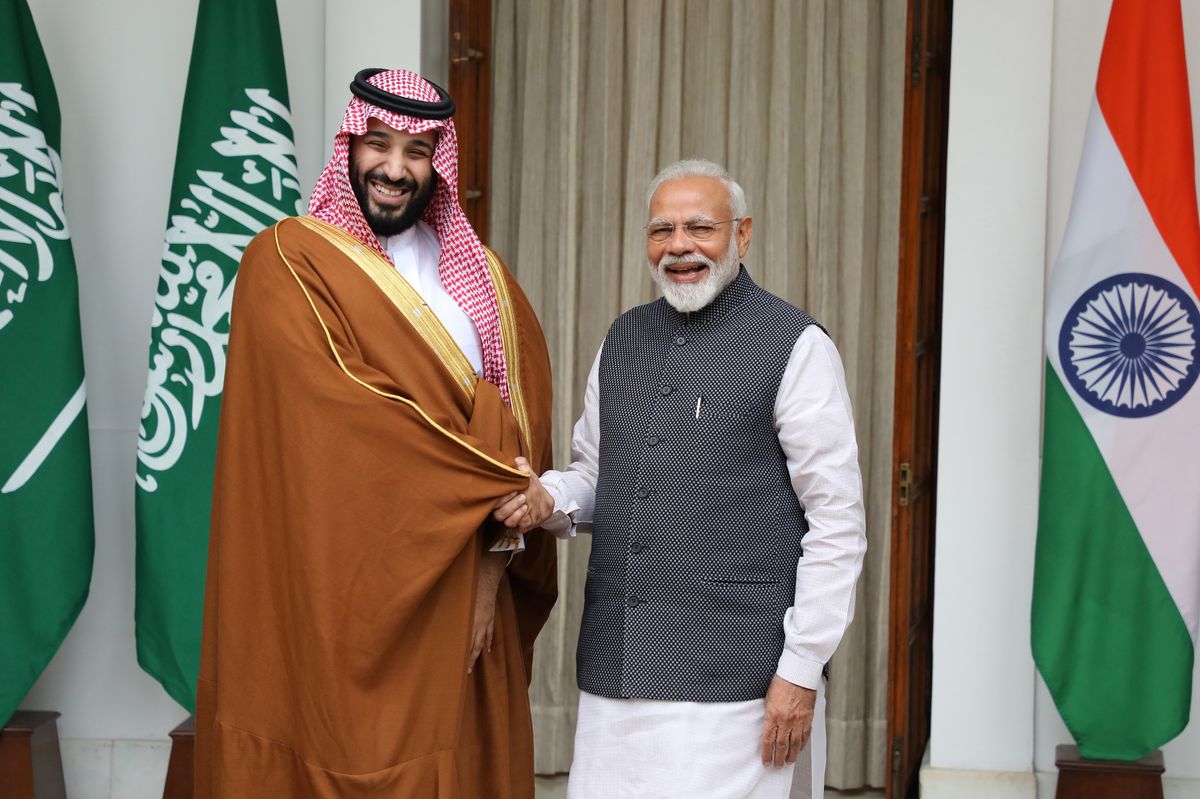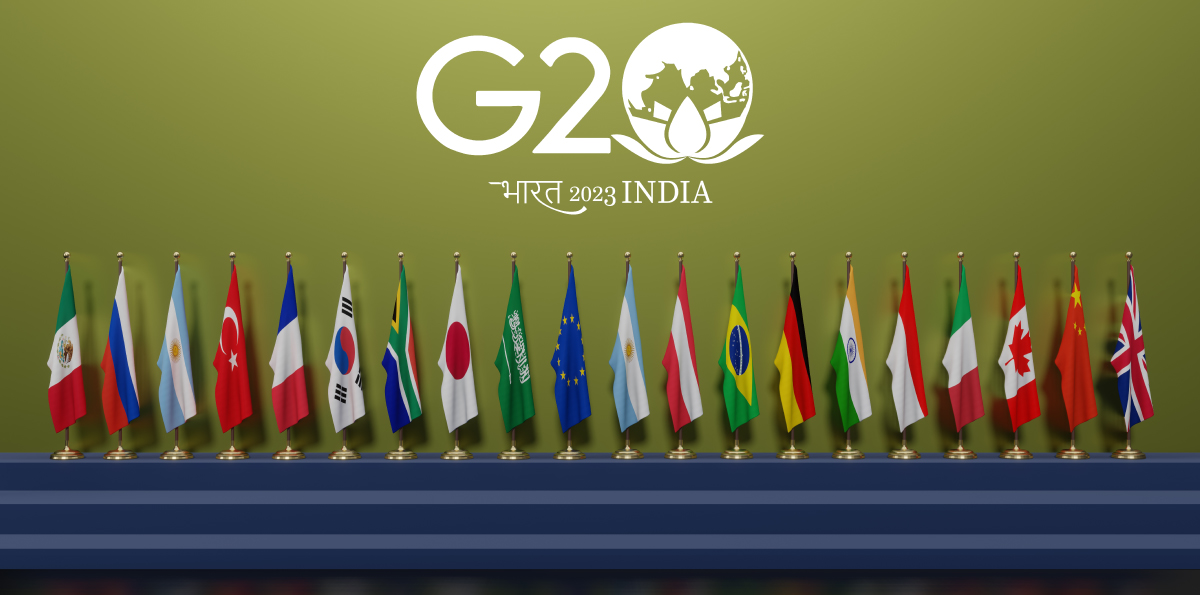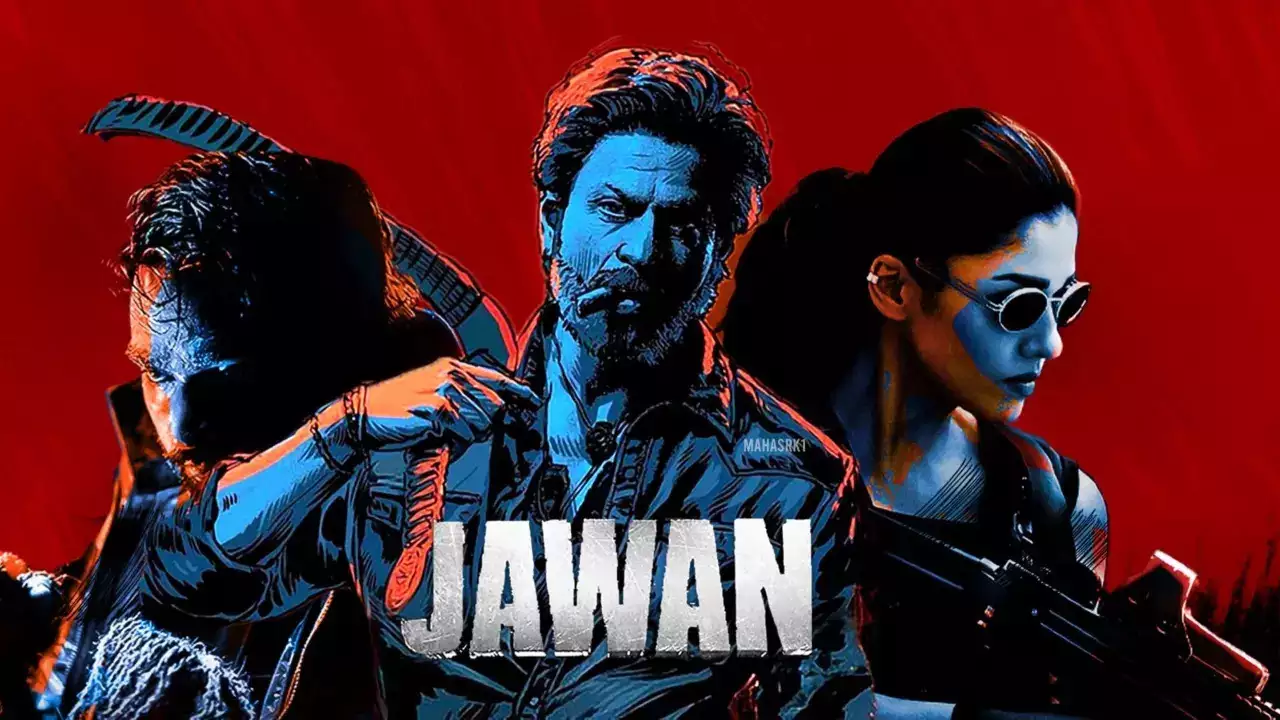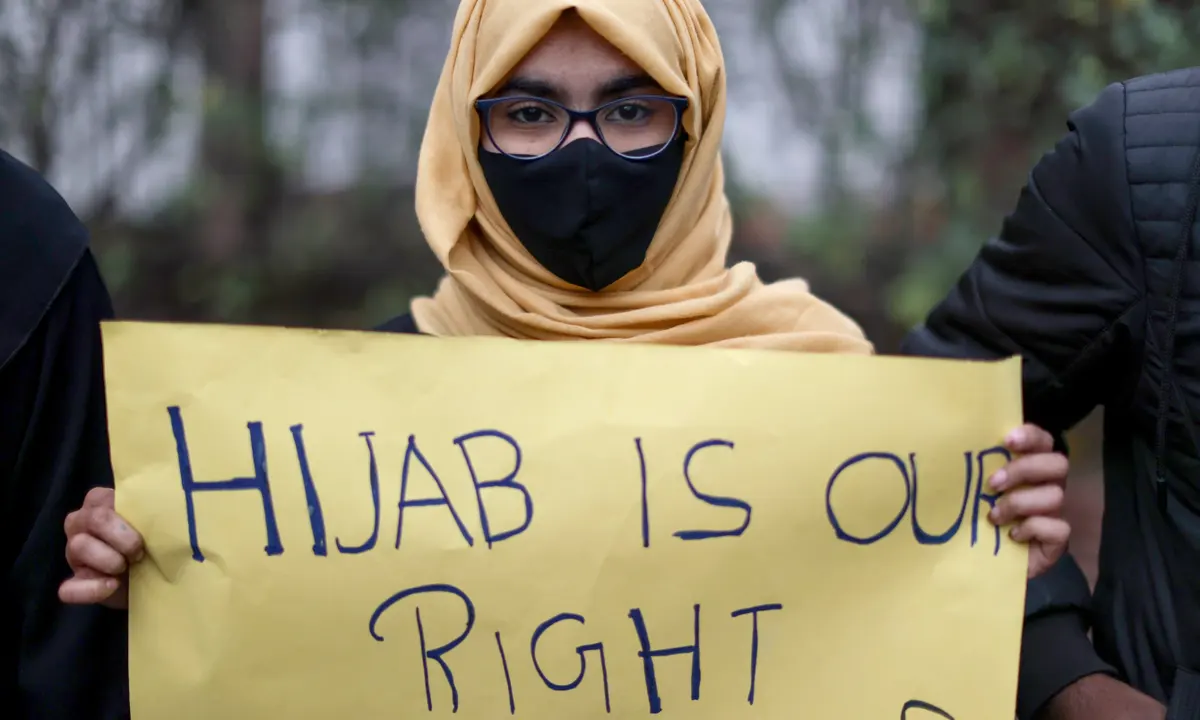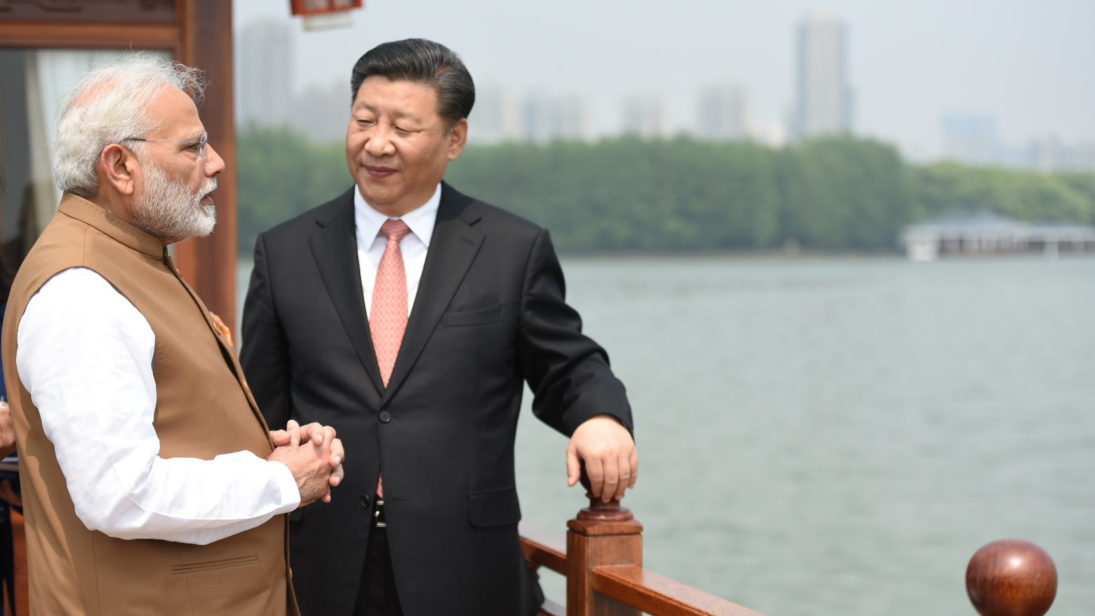The fact that Mohammed bin Salman (MbS), the Crown Prince and Prime Minister of Saudi Arabia, is remaining in India after the G20 conference is evidence of the strong bilateral connections that exist between the two neighbors separated by the Arabian Sea. The visit gives the two leaders a chance to discuss potential new areas of bilateral collaboration against the backdrop of significant changes in local and global politics.
India and West Asia have had ties for many centuries; throughout the Indus Valley Civilization (3300–1300 BCE), there is archaeological evidence of extensive trade, religious, intellectual, and people-to-people exchanges between Indians and inhabitants of the Gulf and Arabian Peninsula. These strong bonds have persisted unbroken up until the present.
The Cold War had an impact on these ties since India was more ideologically and politically aligned with the Arab republics that arose across the region after the 1952 Egyptian revolution. The republics spoke of nationalism, socialism, and a secular order while displaying a strong anti-colonial stance.
On the other hand, Arab kingdoms, led by Saudi Arabia, rooted their ideological moorings in Islam and joined the Western alliance. Although there were few political exchanges between India and the Gulf monarchs, which were at the time militarily and politically linked with Pakistan, Indians gradually began to take over the region’s labor market starting in the 1970s as oil riches filled the sheikhdoms’ coffers.
India became a model of all-around success and an appealing political partner for Gulf countries as the Cold War came to an end due to its high growth rates, growing demand for West Asia’s energy resources, own economic and technological successes (particularly in information technology), resilience of its democratic system, and enduring commitment to multiculturalism.
With the visit of External Affairs Minister Jaswant Singh to Riyadh in January 2001, political relations were established in the new era. The restrictions imposed on bilateral relations by the “Pakistan factor” were removed by the Saudi foreign minister, Prince Saud Al-Faisal, by emphasizing that the kingdom would see relations with India as significant in and of themselves, unaffected by its connections with any other nation. King Abdullah bin Abdulaziz of Saudi Arabia paid a state visit to India in January 2006 and forged “strategic energy ties” with the country while there.
It took the terrorist attack on Mumbai in November 2008 to persuade the leaders of the Gulf states that this was a jihadi strike, organized and carried out by religious fanatics who had been supported and mobilized by Pakistani institutions and individuals as part of state policy aimed at India. The Gulf countries joined India in counterterrorism operations as a result of the incident. As a result, up until that point, mostly energy, economic, and community-based linkages began to take on a “strategic” value.
According to the “Riyadh Declaration” from February 2010, Saudi Arabia takes the lead in forging a “strategic partnership” with India based on the strengthening of connections in the political, security, economic, and cultural spheres. Sharing intelligence regarding extremist elements was an immediate success. Other GCC nations then intensified their bilateral security cooperation with India.
Since 2015, Prime Minister Narendra Modi has outperformed all of his predecessors in terms of the frequency of his one-on-one meetings with GCC leaders and the outcomes he has achieved in fostering both diversity and substance in the ties. Modi traveled to the UAE in 2015, 2018, 2019, and 2022, Saudi Arabia in 2016 and 2019, Qatar in 2016, and Oman in 2018. These trips took place between 2015 and 2022. 2019 saw him host the rulers of the UAE and Saudi Arabia.
The Arab leaders expressed their view of India as their “strategic partner” in every regional capital, reflecting a high degree of common perspectives and strategies on security concerns. Thus, the joint statement with Saudi Arabia underlined the two nations’ duty to advance regional peace, security, and stability. It was highlighted that “the stability and security of the Gulf region and the Indian sub-continent are closely linked, and it is necessary to maintain a secure and peaceful environment for the development of the region’s countries.”
The emerging “strategic partnership” between India and Saudi Arabia was given substance in a joint declaration released in February 2019. The bilateral discussion was institutionalized through the creation of a Strategic Partnership Council at the highest level to track progress. The Saudi side mentioned that there was $100 billion worth of investment potential in India.
While the joint declarations refer to a strategic relationship, it is significant to note that both parties have acknowledged the key significance of economic ties. Particularly significant in this context is Saudi Arabia. The kingdom is India’s fourth-largest trading partner; two-way trade in 2021–2022 was $42.6 billion, and 18% of India’s oil imports were supplied by Saudi Arabia. New areas for bilateral collaboration between the two nations were listed in the joint declaration they signed, including renewable energy, healthcare, food security, technology, climate change, and the defense industry.
In order to overcome issues caused by changes in the production of solar and wind energy, companies from the two nations are currently looking at connecting the Saudi and Indian coastlines with undersea cables. The two nations are considering collaborating on medical research, adopting best practices, and coordinating medical product laws in the sphere of healthcare.
As mentioned above, the importance of strategic alliances with varied and significant security and defense components is emphasized in all joint statements made following high-level talks between India and the GCC. Counterterrorism, joint military drills, cyber-security cooperation, electronic warfare, artificial intelligence, and, more recently, collaborative defense production have all been important aspects of India’s relations with Saudi Arabia.
The then-Indian defense minister, AK Antony, visited Riyadh in 2012 following the signing of the “Riyadh Declaration” in February 2010, which referred to the current state of bilateral relations as a “new era of strategic partnership”. An MoU on defense cooperation was then signed in February 2014. In order to advance training and capacity-building exercises, intelligence sharing, and marine security, it established the Joint Committee on Defense Cooperation (JCDC), which has been meeting on a regular basis.
As a result, engagements with the Saudi counterparts of the Indian Navy and Coast Guard have become commonplace. Admiral Sunil Lanba, the head of the Indian Navy, visited Saudi Arabia’s Naval Operations Center, Naval Fire and Rescue School, and Western Fleet in Jeddah in February 2018.
In order to collaborate on technology related to aerospace, including defense and civilian uses, the Saudi company Power for Defense Technology and the Indian defense organization Bharat Electronics signed a Memorandum of Understanding in December 2022. Additionally, there are hints that Saudi Arabia’s Military Industries Company and India may work together to develop multiple launch rocket systems.
The two nations’ main goal is to vigorously pursue the realization of the areas of cooperation that their leaders have defined, especially in energy, infrastructure, and the designated frontier areas. The timing is also right for the Saudi Crown Prince and Indian Prime Minister to look at fresh opportunities to advance their bilateral relations and create a new regional order.
The interaction between the Crown Prince and the Indian Prime Minister will take place in the context of a complicated regional and global order. Following the conflict in Ukraine, the US has assembled a strong coalition of western countries to take on China and Russia globally. The US’s stated goal is to maintain US hegemony in world affairs by removing the dangers that it sees from China and Russia in the political and economic spheres.
It is attempting to organize an alliance of other like-minded states in order to achieve this. This endeavor has mostly failed thus far because almost no nation in Asia, Africa, or Latin America embraces the US vision of a global dichotomy based on conflict with “the other,” effectively a “new Cold War.” Instead, these countries are dedicated to establishing strategic autonomy, or the freedom to establish and pursue their own interests independent of major powers. In order to prosper jointly in a multipolar world order, these states are looking for multi-alignments with other nations that share their interests and concerns.
It is significant to note that the Gulf Cooperation Council (GCC) members, led by Saudi Arabia, have thrown off the American yoke as the region’s hegemon and have taken the initiative to express their strategic autonomy.
The kingdom has been pursuing de-escalation and dialogue policies throughout West Asia since late 2020, generally dissatisfied with the US’ pusillanimous role as the region’s security guarantor. The blockade of Qatar was lifted in January 2021; a ceasefire in Yemen was established and continues to this day; an opportunity was created to improve relations with Turkey; and a dialogue with Iran was initiated in April 2021.
The latter went through five rounds over a year and resumed when China declared in March of this year that Saudi Arabia and Iran had achieved a settlement to normalize relations.
Above all, the kingdom has accepted an invitation to join BRICS and has joined the Shanghai Cooperation Organization as part of its declaration of strategic autonomy; both organizations are examples of non-western states working together to advance their own interests outside of western control and influence.
India and Saudi Arabia have chances to expand their connections in novel and interesting ways thanks to their shared commitment to strategic autonomy and multi-alignment in a multipolar international order. The western Indian Ocean, which includes the Gulf, the Gulf of Aden, the Red Sea, and the Horn of Africa, including the chokepoints of Hormuz, Bab al-Mandab, and the Suez Canal, presents the most intriguing opportunity to shape regional alignments in the maritime space to provide stability in the geography that is crucially important for both India and Saudi Arabia.
India has significant connections with the region in the fields of energy, economy, logistical connectivity, and security. The kingdom has lengthy coasts on both the Gulf and the Red Sea and is the primary energy and economic powerhouse in the region. Most of the major nations in this strategically significant region are closely connected to both countries. This gives the two largest maritime neighbors the justification they need to create a regional alignment that will promote stability and collaboration.
Long-term, as the multi-polar order develops, there will be opportunities to unite the countries along the Indian Ocean’s coastline with those in Eurasia. India and the monarchy will assume the initiative in this effort, supported by other significant regional powers. The colonial and imperialist eras won’t really be finished until then.
